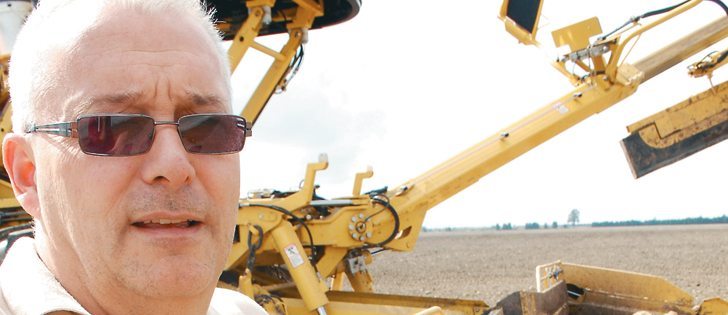New generation VariTarget spray nozzles designed for variable rate application may produce unpleasant surprises this spring, according to Tom Wolf.
“Variable rate nozzles are being actively marketed right now,” says Tom Wolf, an Agriculture Canada research scientist in Saskatoon who specializes in sprayer technology.
“But I’m reluctant. I’m not prepared to endorse them. I’m quite concerned about their strong sensitivity to pressure. VariTarget nozzles are extremely sensitive to changes in pressure input. Even a small pressure change results in a large change in the flow rate.”
Read Also

Land crash warning rejected
A technical analyst believes that Saskatchewan land values could be due for a correction, but land owners and FCC say supply/demand fundamentals drive land prices – not mathematical models
Wolf said the operator must be certain he has uniform pressure across the entire width of the boom. Slight variations from one nozzle to the next will result in major flow rate variations.
Pressure deviations are more likely at the ends of a boom. The bigger the boom, the bigger the pressure variations and flow rate variations.
Wolf said operators should be aware of two distinct scenarios if they try the new VariTarget nozzles this spring:
- Pressure might not be equal along the entire boom if travelling slowly so the pressure is lower. That’s always been a characteristic of low pressure.
- Friction within the boom reduces pressure at the ends when travelling at high ground speeds and operating at high flow rates. Friction can’t be eliminated in the pipe. It’s always there.
“The nozzles furthest from the pump suffer the greatest pressure drop,” Wolf said.
“So with a VariTarget nozzle, that means you also have a drop in the flow rate. If you’re running conventional nozzles, a five (pound per square inch) drop at the ends of your boom doesn’t have too much impact. You can live with it.
“But if you’re running these pressure sensitive variable rate nozzles, the consequences of a five psi drop at the ends of your boom are severe. It can mean a 35 percent drop in output and you cannot live with that.”
Wolf said operators should always check to see that the pressure at the nozzle is what they assume it is, regardless of what nozzle type they choose.
“Pressure at the nozzle isn’t always what you think. You should compare the nozzle pressure to the pressure reading on your main gauge in the cab. It’s an important factor that not many people want to discuss,” he said.
“The signal for your in-cab pressure gauge probably originates before the boom. It doesn’t experience the same pressure drop the nozzles will experience.”
Wolf said sprayer operators should carry a portable gauge that can be temporarily plugged into nozzle bodies. It’s the only way to verify pressure changes along a boom, he added. The in-cab gauge shows only what the pump is doing.
Pressure gauges commonly available at farm supply outlets have the same three-quarter inch NPT thread as nozzle caps and takes two minutes to screw together.
“Now you can quickly remove any nozzle and snap the gauge into place to get a pressure reading. Do this at a few key points along the boom and you’ll see what kind of pressure drop your nozzles experience,” he said.
“If the nozzles are all within one or two psi of the whole boom average, you’re probably OK to try the VariTarget nozzles. If the variation is more than that, don’t try them.
“Then compare your boom readings to your main gauge in the cab. If the cab says 30 psi and the gauge at the nozzle says 25 psi, then you know you’ve got to make adjustments when you’re spraying.”
He said the portable gauge should not be used until the usual spring cleaning is finished:
- Run the sprayer with water;
- Clean all the screens;
- Make sure there is no dirt or residue;
- Then check the nozzle pressures
Contact Tom Wolf at Tom.Wolf@agr.gc.ca for more information.

















